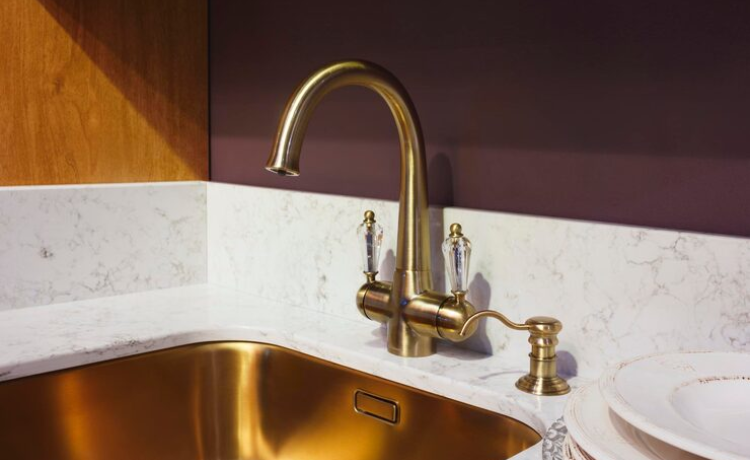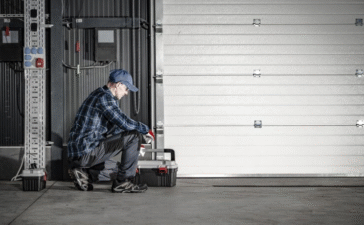Choosing a new kitchen faucet might seem like a small decision, but it has a significant impact on your kitchen’s design and daily functionality. The right fixture can tie the room together, acting as a statement piece that enhances the overall aesthetic. Among the many materials available, brass has re-emerged as a top contender, celebrated for its durability and undeniable charm. A brass kitchen faucet is more than just a plumbing fixture; it’s a design element that offers both timeless appeal and robust performance. Whether you’re undertaking a full kitchen remodel or simply looking to refresh your space, understanding the benefits and varieties of brass faucets is key to making a choice you’ll love for years to come. This guide will walk you through everything you need to know, from its long-lasting nature to its versatile style.
Why Choose a Brass Kitchen Faucet?
When weighing your options, the unique advantages of brass make it a compelling choice. Its combination of strength and beauty sets it apart from other materials on the market.
Durability and Longevity
One of the most significant benefits of a high-quality brass faucet is its remarkable durability. Brass is an alloy of copper and zinc, which creates a material highly resistant to corrosion and rust. Unlike some other metals, brass can withstand constant exposure to water without degrading, making it a perfect long-term investment for a high-traffic area like the kitchen. With proper care, a brass faucet can maintain its integrity and function for decades, proving to be a truly long-lasting fixture. Its ability to resist tarnishing, especially with modern finishes, ensures it remains a reliable part of your kitchen.
Timeless Aesthetic Appeal
Brass brings a sense of warmth, luxury, and classic elegance that few other materials can match. Its golden tones can complement a wide range of kitchen styles, from traditional farmhouse to sleek, modern designs. The aesthetic versatility of brass is further enhanced by its available finishes. A polished brass finish offers a bright, reflective shine that creates a glamorous, high-end look. In contrast, a brushed or satin brass finish provides a softer, more muted appearance that hides fingerprints and water spots, making it a practical choice for busy kitchens. This timeless design ensures your faucet won’t look dated in a few years.
Types of Brass Kitchen Faucets
Brass faucets come in various configurations, each offering different levels of convenience and style. Understanding these types will help you select the best fit for your kitchen’s layout and your personal needs.
A common choice is between a single-handle faucet and a double-handle faucet. Single-handle models are modern and convenient, allowing you to control both temperature and flow with one hand. They often have a minimalist look that suits contemporary kitchens. Double-handle faucets have a more traditional appearance, with separate handles for hot and cold water, offering more precise temperature control.
Many modern brass faucets also come with an integrated sprayer. A faucet with a pull-out sprayer or pull-down sprayer adds immense functionality, making it easier to wash dishes, rinse produce, and clean the sink. A pull-down faucet features a high-arc spout where the spray head pulls directly down into the sink, which is ideal for deep sinks. A pull-out faucet has a spray head that pulls straight out toward you and typically has a lower profile, making it suitable for kitchens with limited overhead space.
How to Choose the Best Brass Faucet
Selecting the perfect brass faucet involves more than just picking a style you like. You need to consider your kitchen’s existing design, your practical needs, and the maintenance involved.
Start by assessing your kitchen’s style. The faucet should complement your cabinetry, countertops, and hardware. For a modern kitchen, a sleek, minimalist brass faucet with a brushed finish might be ideal. For a traditional or farmhouse kitchen, a more ornate, polished brass design could be a better fit. The goal is to match the faucet style to create a cohesive kitchen theme.
Next, think about water flow and pressure. The flow rate, measured in gallons per minute (GPM), determines how quickly water comes out of the faucet. While a high flow rate can be useful, some regions have regulations limiting it to conserve water. Ensure your chosen faucet is compatible with your home’s water pressure to guarantee optimal performance.
Finally, consider maintenance. While brass is durable, some finishes require more care than others. Polished brass, for example, may show water spots and fingerprints more easily than a brushed finish. Choosing a faucet that is easy to clean and from a reputable brand can save you time and effort in the long run, making it a nearly maintenance-free faucet.
Brass Faucets vs. Other Materials
How does brass stack up against other popular faucet materials like stainless steel and bronze?
When comparing stainless steel vs. brass, both are excellent, durable options. Stainless steel is known for its modern, neutral look and resistance to corrosion and scratches. However, brass offers a warmer, more luxurious aesthetic. While a high-quality brass vs. stainless steel faucet debate often comes down to personal style preference, brass generally provides a more classic and high-end feel.
The comparison between a brass and bronze faucet is often about color. Bronze faucets typically have a darker, oil-rubbed finish that leans toward a rustic or Tuscan style. Brass offers a brighter, golden hue. Both are durable alloys, but their aesthetic impact is quite different, with brass providing a more versatile and timeless option for various design schemes.
Also check: “copper kitchen faucet“
How to Maintain Your Brass Faucet
Proper maintenance is key to keeping your brass faucet looking its best. With a few simple steps, you can preserve its shine and prevent damage.
To clean a brass faucet, use a soft cloth with mild soap and water. Avoid abrasive cleaners, harsh chemicals, or scouring pads, as these can scratch the finish. For hard water stains, a solution of equal parts white vinegar and water can be effective, but be sure to rinse it off thoroughly. Regular, gentle cleaning is the best way to maintain its luster.
To prevent tarnishing, especially on unlacquered brass which is designed to patina over time, you can apply a thin coat of wax. For lacquered finishes, the protective coating already does most of the work. The key to brass faucet maintenance is consistency. Wiping the faucet dry after each use will prevent water spots and mineral buildup, keeping it looking new for longer.
Find Your Perfect Fixture
Investing in a high-quality brass kitchen faucet is a decision that pays off in both beauty and performance. Its durability ensures it will stand the test of time, while its timeless elegance elevates your kitchen’s design. By considering your style, functional needs, and the different types available, you can choose a fixture that you will enjoy for years to come.
Frequently Asked Questions (FAQ)
What is the best finish for brass kitchen faucets?
The best finish depends on your style and maintenance preferences. Polished brass offers a classic, shiny look but may require more frequent cleaning to remove fingerprints. Brushed or satin brass has a softer, muted finish that hides water spots well and is very popular in modern and transitional kitchens. Unlacquered brass is a “living finish” that will naturally patina and darken over time, creating a unique, aged look that is highly sought after in traditional and rustic designs.
How long do brass faucets last?
With proper care, a high-quality solid brass faucet can last for decades. The brass faucet lifespan is significantly longer than that of faucets made from zinc alloys or plastic. Its inherent resistance to corrosion and rust makes it one of the most durable materials available for plumbing fixtures, representing an excellent long-term investment.
How do I clean a brass faucet without damaging it?
For regular cleaning, use a soft cloth with mild soap and warm water. Rinse thoroughly and buff dry with a clean, soft cloth to prevent water spots. Avoid abrasive sponges, harsh chemicals like ammonia or bleach, and acidic cleaners, which can damage the protective lacquer or scratch the finish. For tough spots, a 50/50 solution of water and white vinegar can be used sparingly, followed by a thorough rinse.
Can brass faucets be used in modern kitchens?
Absolutely. Brass faucets are incredibly versatile and fit beautifully into a modern kitchen design. Sleek, minimalist designs with clean lines and a brushed or matte brass finish are particularly popular. They add a touch of warmth and color that can break up the monotony of neutral palettes often found in contemporary spaces, acting as a striking focal point.
Do brass faucets tarnish over time?
Brass faucet tarnishing depends on the finish. Unlacquered brass is intended to tarnish, developing a rich patina over time that adds to its character. Most modern brass faucets, however, come with a protective lacquer or PVD finish that prevents tarnishing and corrosion, ensuring they maintain their original appearance with minimal maintenance. If the protective coating wears off over many years, tarnishing could occur, but this is rare with quality products.












